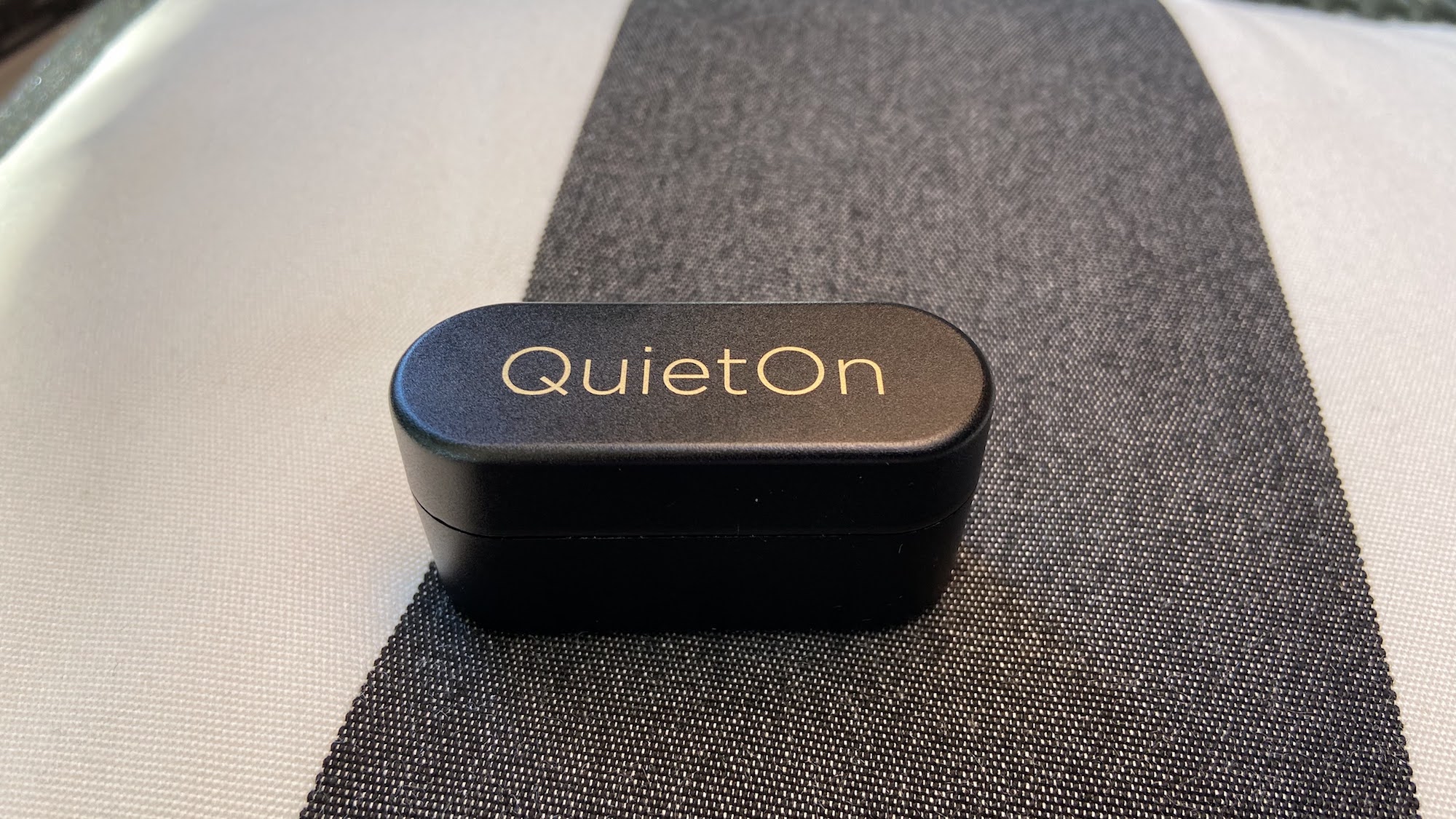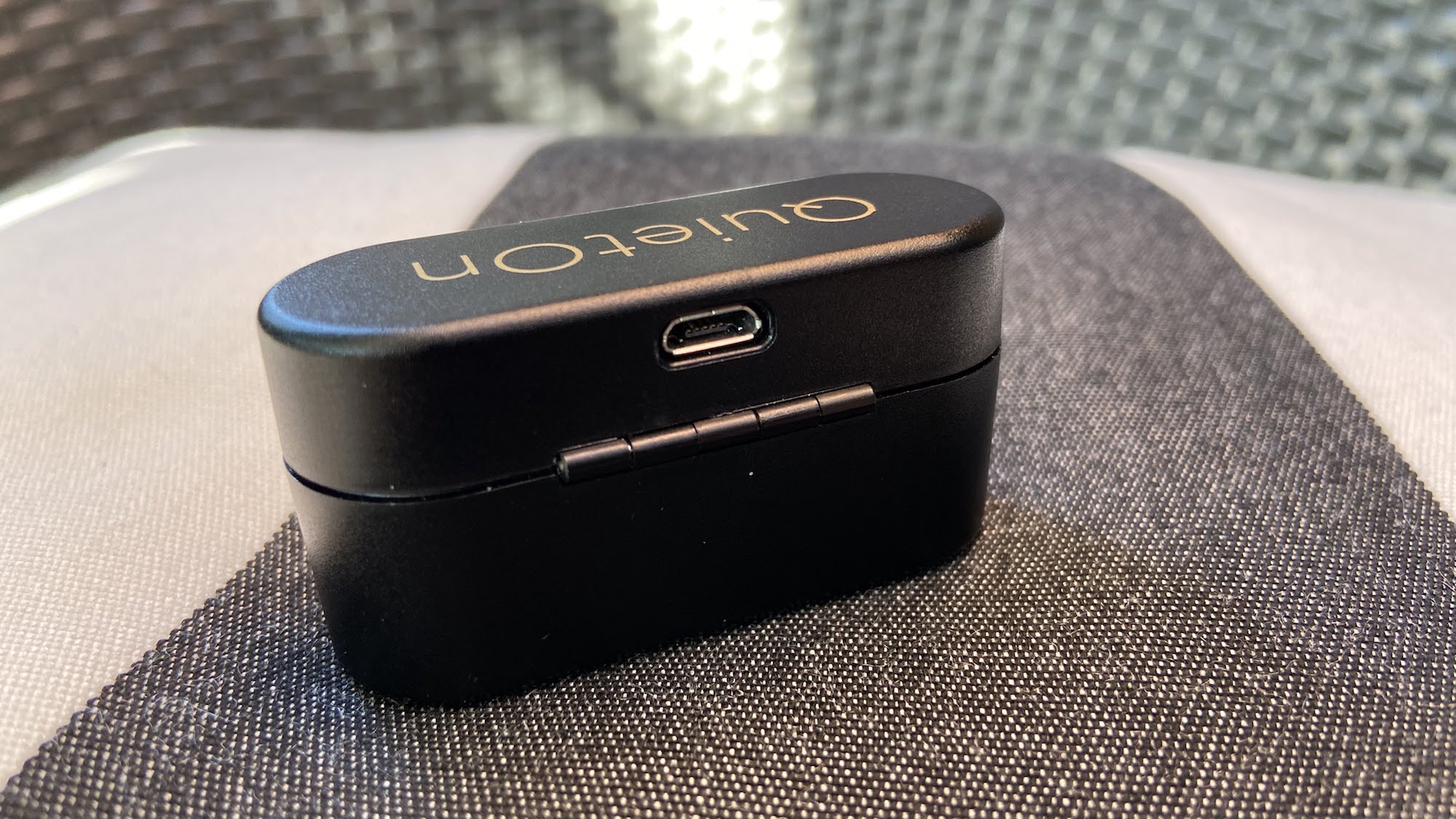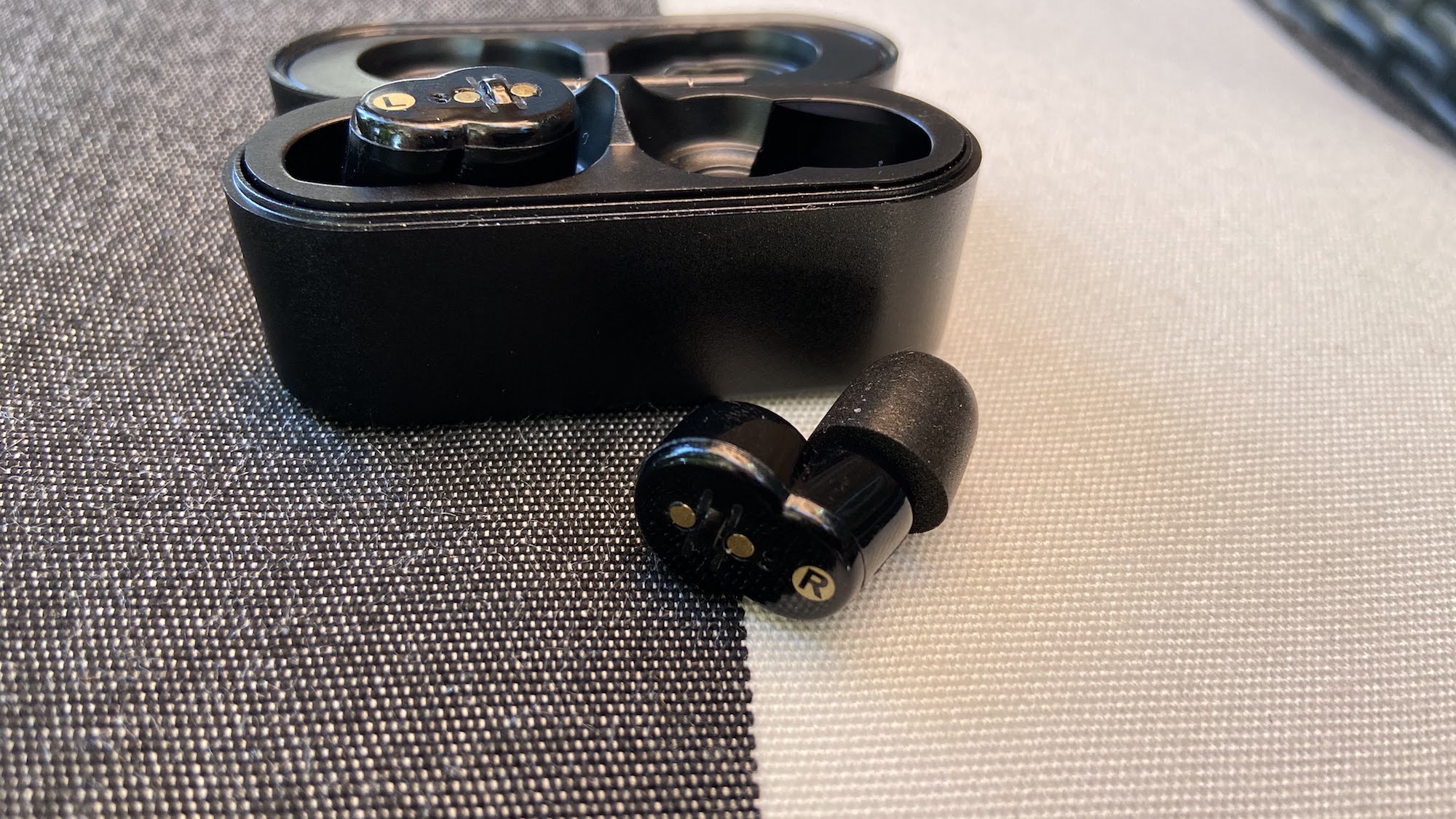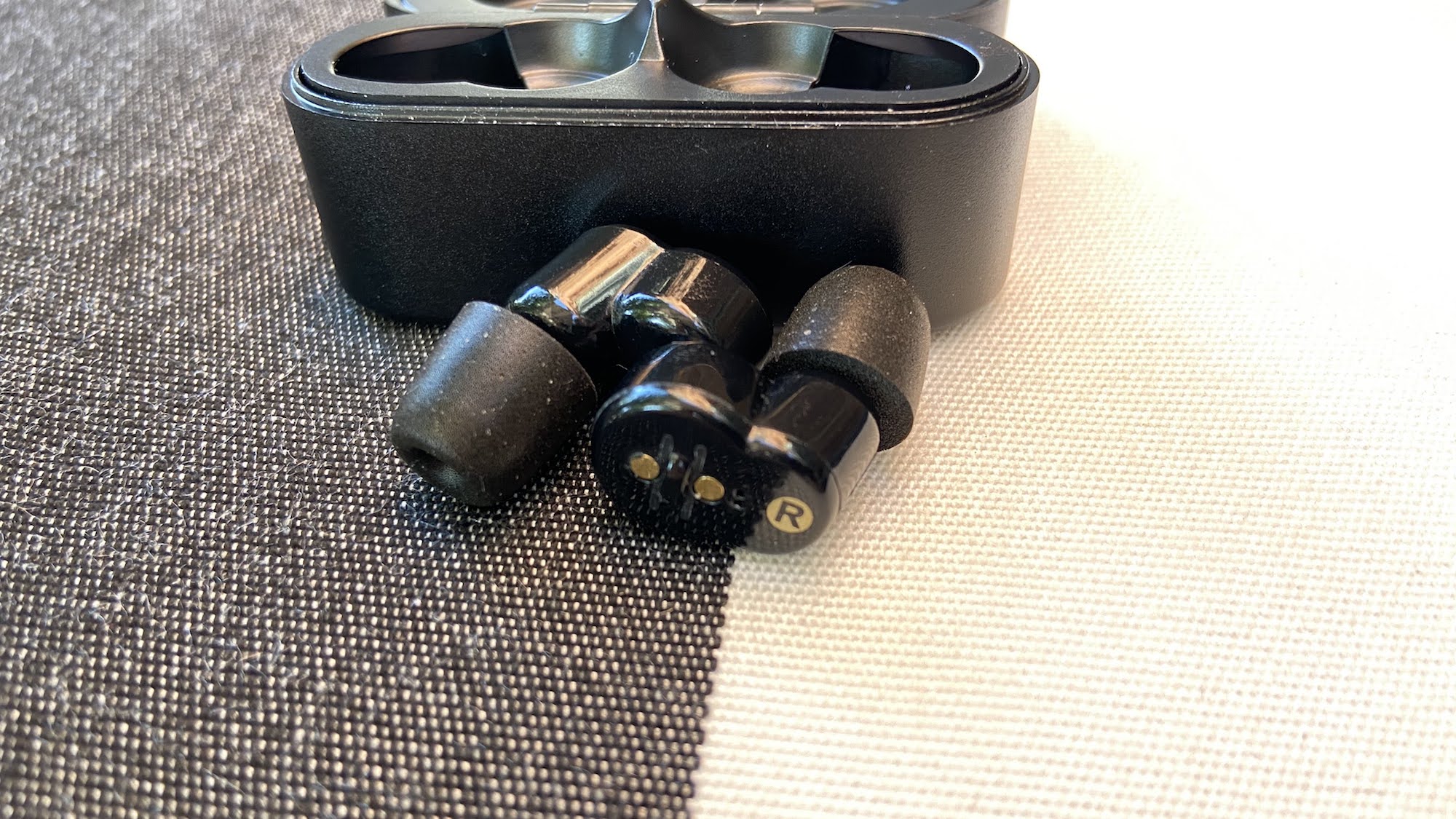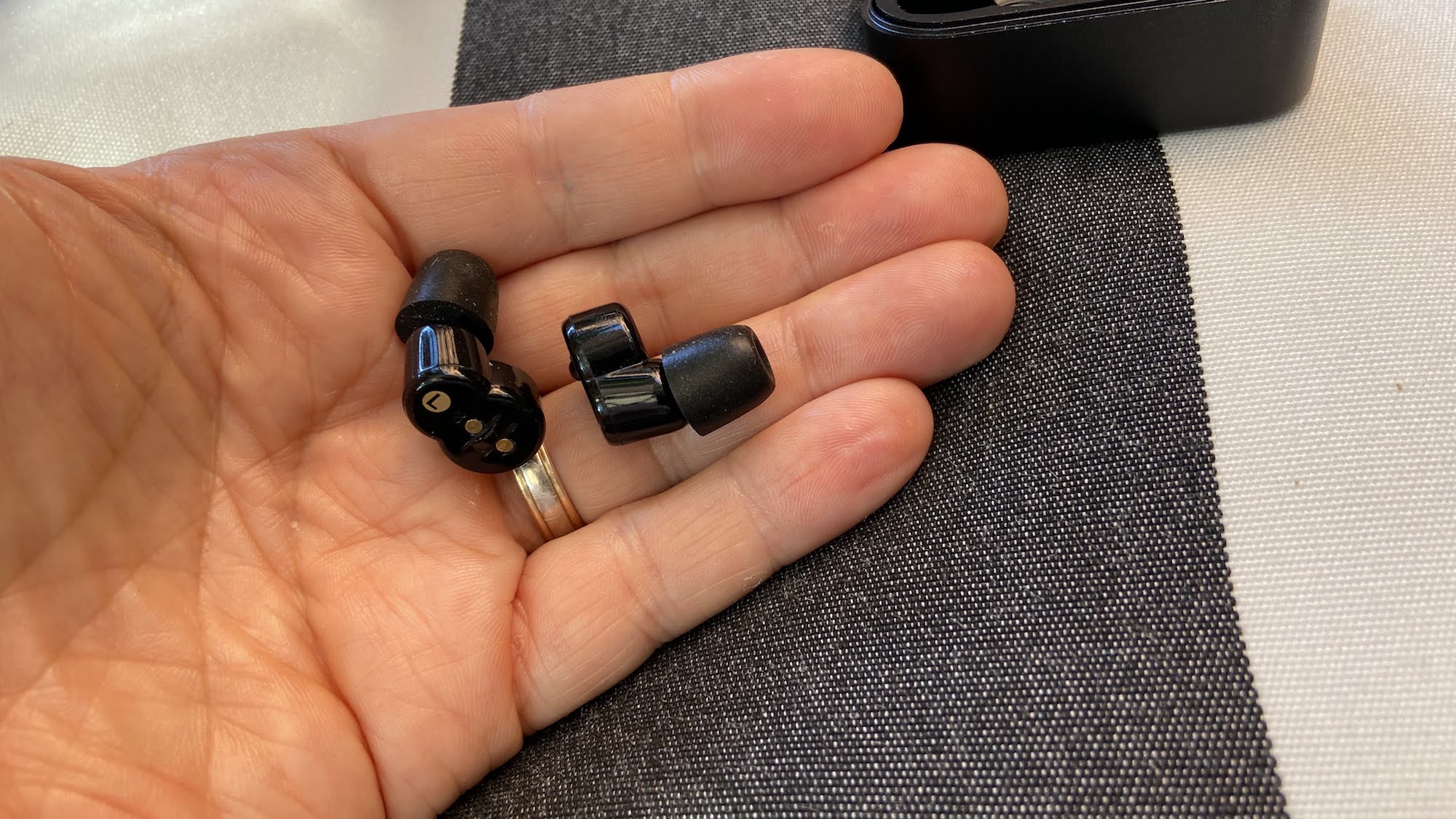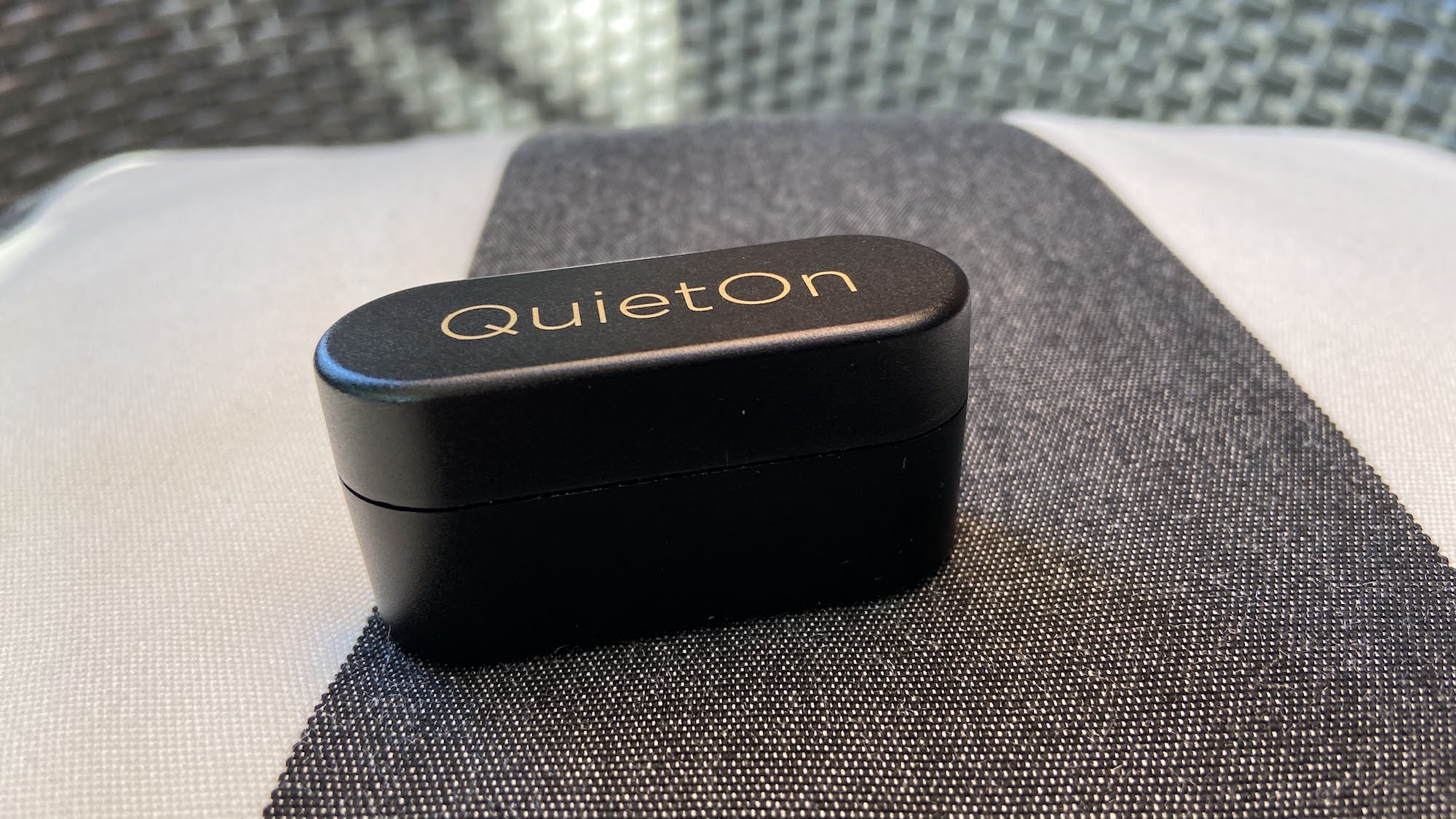
“If comfort and fit don't get in your way, these ANC earbuds are killer quiet.”
- Excellent noise cancellation
- Very good noise isolation
- Smallest ANC earbuds you can buy
- 20-hour battery life
- Expensive
- Charging case lacks a battery
- May not be comfortable enough for sleeping
The secret to getting a good night’s sleep is — depending on who you ask — your diet, your amount of exercise, your state of mind, your bedroom’s temperature, your bedroom’s feng shui, or dozens of other factors. But most people agree that you need a quiet place to sleep above all else. Otherwise, all of those other things don’t matter.
But silence, like sleep itself, can be elusive, which is why QuietOn has developed the $200 QuietOn Sleep earbuds. They use active noise cancellation (ANC) technology that QuietOn claims can block out more sound than foam earplugs alone.
Do they work, and are they worth the price? Let’s find out.
What’s in the box?

The QuietOn Sleep earbuds arrive in a tiny black cardboard sleeve. Pull the main carton from the sleeve and you’ll find the earbuds sitting in their charging case, two alternative sizes of foam eartips, and a Micro USB charging cable.
Other than some printed instructions in a variety of languages, that’s all there is. You should be able to recycle all of that material if you choose not to keep it.
Design
The QuietOn Sleep look like very small true wireless earbuds, a similarity that is reinforced through the use of a flip-top charging and storage case that bears a strong resemblance to theose for products like Apple’s AirPods Pro and Jabra’s Elite Active 75t.
But that similarity can create a problematic expectation. Unlike true wireless earbuds, which recharge inside their case using the case’s own built-in battery, the QuietOn’s case does not have its own battery. It’s effectively just a protective charger. To actually charge the earbuds, the case must be plugged into its charging cable.
The case itself, like the QuietOn buds, is tiny and will easily fit pretty much wherever you choose to keep it, whether that’s a pants pocket or a purse. The lid has a powerful magnet, which keeps it firmly closed. The hinge has no resistance at all and lets the lid flip open quickly, but also doesn’t do much to keep it from flopping around.
Just how good are the QuietOn Sleep at canceling sounds? In a word: Fantastic.
If you’re used to true wireless earbuds, you know that getting them to sit evenly inside their charging bays is key. If they’re askew, they probably won’t charge correctly.
So when you first place the QuietOn back in their case, you may get frustrated that they seem to wobble about and never really lock into place, even though there are internal magnets that attempt to help. You’ll have to look past this — unlike true wireless earbuds, the QuietOn’s charging contacts connect with the case’s lid, not the base. So as long as each earbud is more or less seated in their respective slots, closing the lid forces everything to line up correctly.
The earbuds themselves are remarkably small, and their gloss-black housings virtually disappear inside the ear’s concha. You’ll have to look very closely to notice the single physical mode-switch button on each earbud that sits between the charging contacts.
Comfort, fit, and controls

The bottom line with any object that sits inside your ear canal is that “comfort” is a relative idea. I’ve tried lots of foam earplugs over the years, and I’m not sure I’d call any of them comfortable, but you can certainly get used to them.
I found it more challenging to get used to the feel of the QuietOn Sleep.
I’m a side-sleeper and I simply couldn’t ignore the pressure that the QuietOn created in my ear.
Selecting the right eartip size (I ended up using the smallest size) is key, not only for comfort, but for the passive sound isolation a good fit offers. The eartips are made from high-quality memory foam, and they’re easily the most comfortable earbud tips I’ve ever tried.
But it’s the main body of the QuietOn that will be make-or-break in terms of comfort.
It has an acoustic guitar-like shape where one rounded section is larger than the other. QuietOn recommends that you twist the earbuds into place until the larger section faces backward. You know they’re seated correctly when the small “L” or “R” printed on the surface is level — not upside down or slanted. Despite this guidance, I found it slightly more comfortable to tilt the larger section.
As small as the body is, it’s made of hard plastic, and the round edges can’t completely compensate for the straight sides and 90-degree corners. For me, this meant I was always aware of having an object lodged in my ear.
QuietOn claims the design is so ergonomic that even folks who sleep on their sides will find the earbuds comfortable enough to use overnight. Granted, I’m a focus group of one, but I’m a side-sleeper and I simply couldn’t ignore the pressure that the QuietOn created in my ear when I lay my head down on the pillow. Your mileage, as they say, may vary, and I’m guessing those who sleep on their backs won’t be bothered by it at all.
When I wasn’t sleeping, I used the QuietOn as an alternative to my ANC headphones to help block out the household noise that has become the background sound of my workdays since the pandemic began. They’re comfortable enough that I was able to keep them in place for about three hours at a time, but after that, my ears needed a break.
There’s no power switch for the QuietOn — removing them from their storage case turns them on, while replacing them turns them off.
They’re far better at reducing sound than regular earplugs.
When turned on, those tiny mode-switch buttons let you shift from full active noise cancellation to pass-through (which lets outside sounds in so you can have a conversation with someone without removing the buds). They’re a bit tricky to press and require a fair amount of pressure to get them to click. I ended up using the edge of my fingernail to push them as the pads of my fingers proved to be too soft (apparently spending nine hours a day at a keyboard isn’t enough to build up the right calluses).
Noise-canceling

Issues of comfort aside, just how good are the QuietOn Sleep at canceling sounds? In a word: Fantastic.
When dealing with low- to mid-frequency sounds like the droning of a fan in a bedroom at night, or the kinds of thumps and bumps that might penetrate your walls due to a neighboring condo dweller who thinks that moving furniture at 3 a.m. is good fun, the QuietOn act like a cone of silence, reducing these unwanted vibrations to a whisper.
To put it in perspective, they are more effective than Sony’s ANC, which it uses on the excellent WH-1000XM4 headphones and WF-1000XM3 earbuds, and they even edge out Apple’s AirPods Pro, which have the best ANC of any earbuds we’ve tried. I expect they’ll handle aircraft sounds flawlessly.
But much more importantly — because the QuietOn are not necessarily meant to compete with audio earbuds — they’re far better at reducing sound than regular earplugs.
I put them head-to-head (ear-to-ear?) with a set of free hotel-issued earplugs, a set I bought at my local pharmacy, and even a pair from Home Depot that are designed to block harmful workplace sounds. The QuietOn Sleep beat them all.
They’re so good at creating silence, they actually introduced a new problem: My tinnitus, which I can usually ignore completely, became the only thing I could hear — a high-pitched ringing that was instantly brought to the foreground thanks to the QuietOn’s blanketing of everything else.
Battery life
QuietOn claims the earbuds will work in ANC mode for 20 hours when fully charged, and that it only takes an hour to charge them from empty.
From what I can tell, these numbers are accurate. However, there’s no way to know how much charge is left in the earbuds. Unlike audio earbuds, there’s no voice prompt to let you know the battery’s status, and no visible indicator either.
Your best strategy is to place the earbuds back in their case in the morning and plug the case in to begin charging. You’ll see a blue LED indicator on the case for each earbud while charging is happening.
Our take
If unwanted noise is preventing you from sleeping and you find the QuietOn Sleep comfortable enough to wear all night, $200 is a small price to pay for their supreme silence.
Is there a better alternative?
QuietOn claims its earbuds are the smallest ANC devices on the market. And since Bose decided to abandon its Sleepbuds over battery issues, there isn’t another set of fully wireless, in-ear ANC earbuds for sleeping. There are, however, several competitive products that use different techniques like the noise-masking AmazFit Zenbuds, but we haven’t had a chance to put these to the test.
How long will they last?
Tiny, solidly built, and with only a single physical button, the QuietOn should last for years of use. The foam eartips will need occasional replacement — possibly every few months if used nightly — but that’s normal for earbuds.
QuietOn claims that the batteries “will last for thousands of charging cycles. In normal use, this would mean several decades.” They come with a one-year warranty.
Should you buy them?
Yes. With a 14-day return policy, you should have plenty of time to see if the QuietOn are comfortable enough for sleeping. If they are, you’re going to love them.
